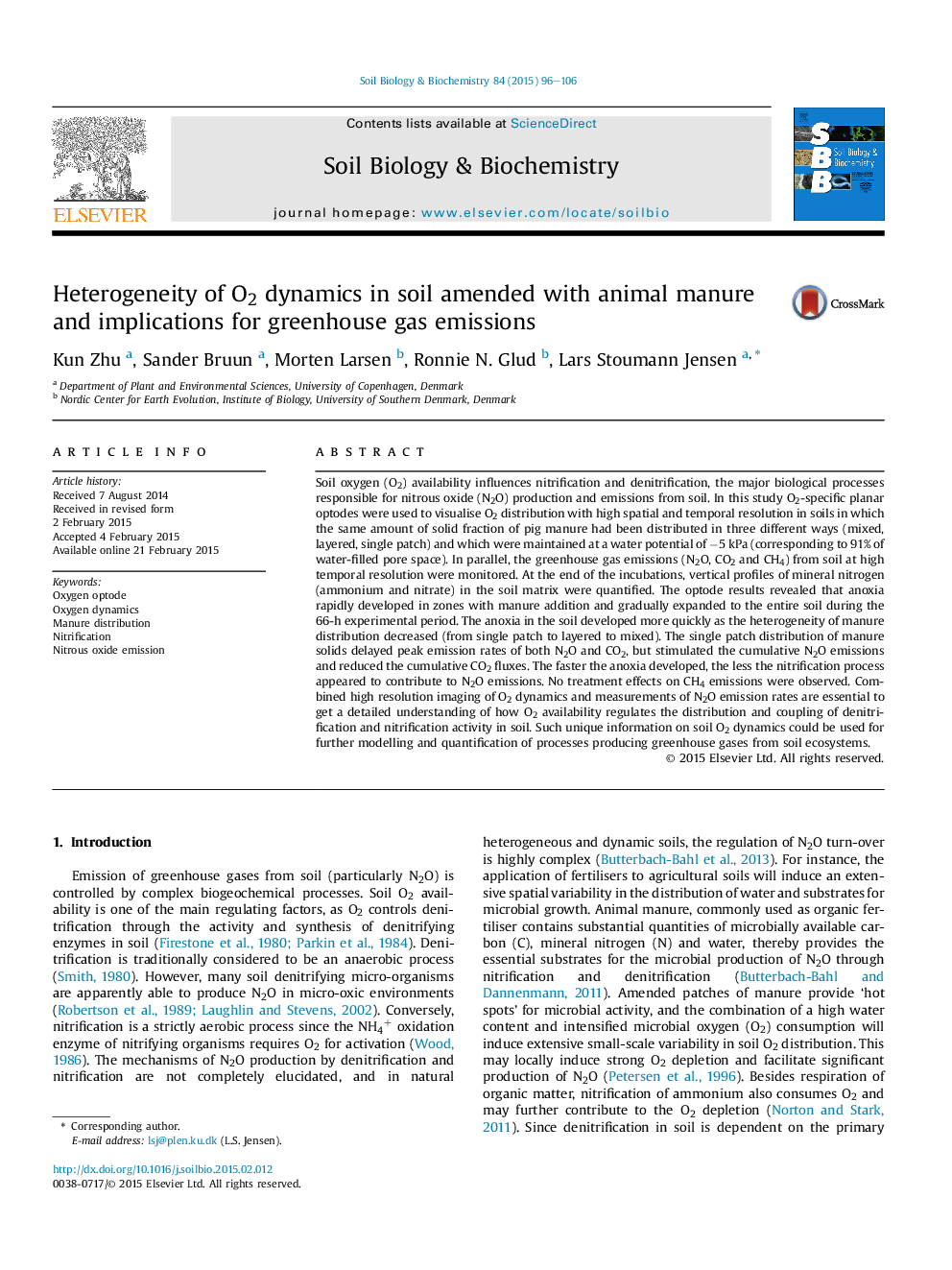| Article ID | Journal | Published Year | Pages | File Type |
|---|---|---|---|---|
| 2024548 | Soil Biology and Biochemistry | 2015 | 11 Pages |
•The distributions of manure and addition of mineral ammonium affected the spatio-temporal dynamics of soil O2 significantly.•The proportions of both anoxic and oxic areas in soil are important regulating factors for N2O emissions.•Homogeneously distributed manure led to earlier peak emission rates of N2O, but a lower cumulative emission.•Mineral ammonium addition interacted with manure distribution and stimulated the N2O emission.
Soil oxygen (O2) availability influences nitrification and denitrification, the major biological processes responsible for nitrous oxide (N2O) production and emissions from soil. In this study O2-specific planar optodes were used to visualise O2 distribution with high spatial and temporal resolution in soils in which the same amount of solid fraction of pig manure had been distributed in three different ways (mixed, layered, single patch) and which were maintained at a water potential of −5 kPa (corresponding to 91% of water-filled pore space). In parallel, the greenhouse gas emissions (N2O, CO2 and CH4) from soil at high temporal resolution were monitored. At the end of the incubations, vertical profiles of mineral nitrogen (ammonium and nitrate) in the soil matrix were quantified. The optode results revealed that anoxia rapidly developed in zones with manure addition and gradually expanded to the entire soil during the 66-h experimental period. The anoxia in the soil developed more quickly as the heterogeneity of manure distribution decreased (from single patch to layered to mixed). The single patch distribution of manure solids delayed peak emission rates of both N2O and CO2, but stimulated the cumulative N2O emissions and reduced the cumulative CO2 fluxes. The faster the anoxia developed, the less the nitrification process appeared to contribute to N2O emissions. No treatment effects on CH4 emissions were observed. Combined high resolution imaging of O2 dynamics and measurements of N2O emission rates are essential to get a detailed understanding of how O2 availability regulates the distribution and coupling of denitrification and nitrification activity in soil. Such unique information on soil O2 dynamics could be used for further modelling and quantification of processes producing greenhouse gases from soil ecosystems.
